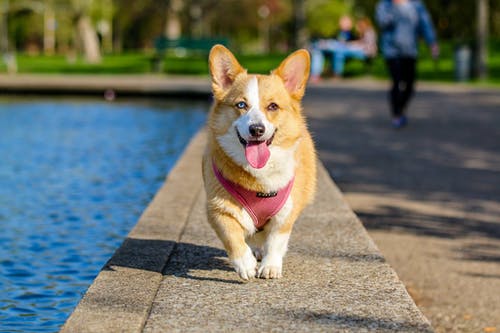Understanding and managing our pet’s eye health can often be challenging. Veterinary Ophthalmology, a specialized field that targets the diagnosis and treatment of animal eye disorders, provides solutions. This article explores the latest treatments and developments in this field, providing insight into common eye conditions in pets, their symptoms, advanced treatment procedures, and the crucial role of preventive measures.
Veterinary Ophthalmology
Veterinary ophthalmology mainly focuses on diagnosing and treating eye disorders in animals. It is a specialized field that requires in-depth knowledge and training. Over the years, there have been impressive advancements in this field, providing a range of modern procedures to alleviate eye-related ailments in pets.
Eye Issues in Cats and Dogs
Cats and dogs, just like us humans, are prone to various eye issues. Recognizing these common ailments and their symptoms can help pet owners act swiftly, facilitating early treatment. Here are some eye problems commonly experienced by cats and dogs:
- Cataracts: This condition, identifiable by a cloudiness in the pet’s eyes, can cause blurred vision and sometimes even blindness.
- Conjunctivitis: Inflammation or infection of the outer membrane of the eyeball and the inner eyelid, often leading to redness, itchiness, and discharge.
- Glaucoma: Caused by increased pressure in the eye, common symptoms include eye redness, excessive tearing, and visible discomfort. If left untreated, it can cause blindness.
- Cherry Eye: A condition predominantly seen in dogs where the third eyelid’s gland prolapses, causing a red swelling at the eye’s corner.
- Entropion: This condition, where the eyelid rolls inward, causes the pet’s eyelashes to rub against the cornea, causing pain and discomfort.
- Corneal Ulcers: These are painful open sores on the cornea that can cause squinting, redness, and an opaque or cloudy cornea.
- Progressive Retinal Atrophy: A degenerative disease that leads to the gradual deterioration of the retina, often resulting in night blindness and, eventually, total blindness.
Consult animal eye specialists in Kirkland, WA, or your local veterinary ophthalmology clinic if you observe suspicious symptoms. Regular check-ups can help diagnose these conditions early and prevent further complications, contributing significantly to your pet’s eye health.
Understanding Pet Eye Conditions and Their Treatment
Pet eye conditions vary from mild infections to more severe ones requiring surgical intervention. As pet owners, familiarizing ourselves with these conditions and treatments can help make informed decisions. Below, we delve into some treatment options for common pet eye conditions:
- Infections and Inflammations: Common conditions like conjunctivitis or uveitis usually require topical or oral medication. Pet eye infection treatments typically include antibacterial or antifungal eye drops to combat the infection. Anti-inflammatory drugs can also help ease the discomfort and inflammation.
- Glaucoma: This condition may require both medication and surgery. Special medicated eye drops or pills can help reduce the pressure in the eye. In advanced cases, surgery may be required to prevent further damage.
- Cataracts: If cataracts cause significant visual impairment, cat & dog eye surgery, such as cataract surgery for pets, might be recommended. This involves the removal of the cloudy lens and, often, the replacement with a synthetic lens.
- Cherry Eye: Topical therapy can sometimes help, but most cases of cherry eye require surgical gland repositioning.
- Eyelids Issues: Abnormally positioned eyelids (Entropion and Ectropion) or eyelid tumors can cause discomfort and harm to the eye. These issues are typically resolved through surgery.
- Corneal Ulcers: Treatment includes anti-bacterial or anti-fungal eye drops, and in some cases, surgery may be required.
- Retinal Diseases: While treatment options for retinal diseases are limited, specific medications to slow disease progression are available for conditions like Progressive Retinal Atrophy.
Not all eye conditions imply a dire situation – with the right diagnosis and timely treatment, many common conditions can be managed effectively, restoring your pet’s comfort and vision.
Exploring the World of Advanced Ophthalmic Surgical Procedures for Pets
Modern procedures in veterinary ophthalmology have provided groundbreaking solutions to chronic and severe eye issues in pets. These methods include advanced surgical techniques such as exenteration of the orbit in animals for malignancies, ectropion surgery to correct eyelid abnormalities, entropion surgery, and eyelid tumor removal. The field is ever-evolving, and novel approaches are continuously being developed to address pet vision care effectively.
Preventive Measures and Consistent Eye Care
Preventive care plays a pivotal role in maintaining pets’ eye health. Keeping your pet’s eyes clean, providing a healthy diet, avoiding harmful environments, and routine check-ups can prevent eye issues. Regular ophthalmic examinations and consultations with veterinary eye specialists can help detect and treat potential eye problems, ensuring that your furry friends stay in the prime of their health.
In terms of veterinary specialists for eye health, these professionals have dedicated their careers to diagnosing, treating, and preventing eye diseases in animals. They have specialized knowledge and advanced tools that effectively treat pet eye conditions, contributing significantly to modern animal ophthalmic care.
Conclusion
The field of veterinary ophthalmology has seen numerous advancements that have improved pet eye diagnostics, treatment methods, and preventive care. Pet owners must understand the importance of regular eye check-ups and seek timely treatment for abnormalities. Proactively prioritizing your pet’s vision care could be instrumental in preserving their happiness and well-being.



